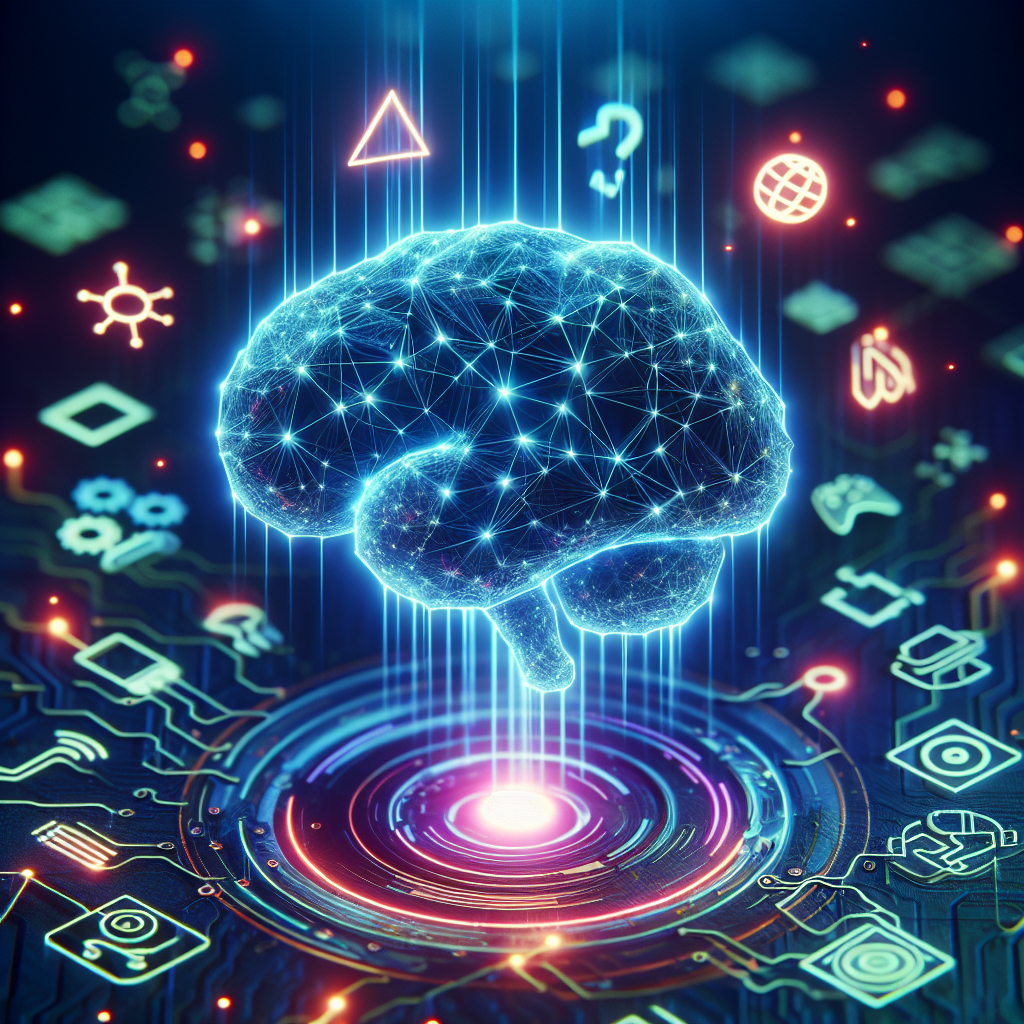With the rapid advancements in artificial intelligence (AI) technology, the gaming industry has witnessed a significant transformation in recent years. One of the most noteworthy developments in this field is the creation of game content generation tools powered by AI. These tools have revolutionized the way game developers create content, allowing them to generate vast amounts of high-quality content in a fraction of the time it would take using traditional methods.
AI-powered game content generation tools utilize machine learning algorithms to analyze existing game assets, such as textures, models, and animations, and use this data to create new content automatically. This not only saves developers time and resources but also enables them to focus on other aspects of game development, such as gameplay and story.
There are several benefits to using AI-powered game content generation tools. Firstly, they can significantly speed up the content creation process, allowing developers to create more content in less time. This is particularly useful for indie developers and smaller studios with limited resources, as it enables them to compete with larger studios in terms of content quality and quantity.
Secondly, AI-powered game content generation tools can help improve the quality of content created. By analyzing existing game assets and generating new content based on this data, developers can ensure that the new content is consistent with the overall art style of the game. This can help create a more cohesive and visually appealing gaming experience for players.
Additionally, AI-powered game content generation tools can help reduce the risk of errors and inconsistencies in game assets. By automating the content generation process, developers can minimize human error and ensure that all assets are created according to predefined rules and guidelines. This can help improve the overall quality of the game and enhance the player experience.
One of the key advantages of AI-powered game content generation tools is their ability to adapt and learn from new data. This means that as developers use the tools to create more content, the algorithms can learn from this data and improve their performance over time. This can help developers create more diverse and unique content, as the tools can generate new assets based on a broader range of input data.
There are several examples of AI-powered game content generation tools that have been developed in recent years. For example, Nvidia’s GauGAN tool uses AI to generate realistic landscapes based on simple sketches drawn by users. This tool has been used by game developers to create detailed and immersive environments for their games, saving them time and resources in the process.
Another example is the use of AI in procedural generation algorithms, which can create vast and varied game worlds automatically. By using AI to generate terrain, buildings, and other assets, developers can create expansive and dynamic game worlds that are unique and engaging for players.
Despite the numerous benefits of AI-powered game content generation tools, there are also some challenges and limitations to consider. For example, while AI can generate high-quality content quickly, it may lack the creativity and artistic vision of human developers. This can result in content that feels formulaic or lacks the unique touch that human creativity can bring.
Additionally, there are concerns about the potential impact of AI on the job market for game developers. As AI-powered tools become more advanced and capable of generating content automatically, there is a risk that some developers may be displaced by these tools. However, many experts believe that AI will not replace human developers entirely, but rather enhance their capabilities and streamline the content creation process.
In conclusion, AI-powered game content generation tools have the potential to revolutionize the way game developers create content. By automating the content generation process and leveraging machine learning algorithms, developers can create vast amounts of high-quality content in a fraction of the time it would take using traditional methods. While there are some challenges and limitations to consider, the benefits of using AI in game development are clear, and these tools are likely to play an increasingly important role in the future of the gaming industry.
FAQs:
Q: How do AI-powered game content generation tools work?
A: AI-powered game content generation tools use machine learning algorithms to analyze existing game assets and generate new content based on this data. By automating the content creation process, developers can create high-quality content quickly and efficiently.
Q: What are the benefits of using AI-powered game content generation tools?
A: The benefits of using AI-powered game content generation tools include speeding up the content creation process, improving content quality, reducing errors and inconsistencies, and adapting and learning from new data over time.
Q: Are there any limitations to using AI-powered game content generation tools?
A: While AI-powered game content generation tools offer many benefits, there are also some limitations to consider. For example, AI may lack the creativity and artistic vision of human developers, and there are concerns about the potential impact on the job market for game developers.
Q: How can AI-powered game content generation tools be used in game development?
A: AI-powered game content generation tools can be used to create a wide range of game assets, including textures, models, animations, and environments. By automating the content creation process, developers can focus on other aspects of game development, such as gameplay and story.
Q: What is the future of AI in game development?
A: The future of AI in game development is bright, with AI-powered tools likely to play an increasingly important role in the industry. As AI technology continues to advance, developers can expect to see even more sophisticated and powerful tools for creating game content.

